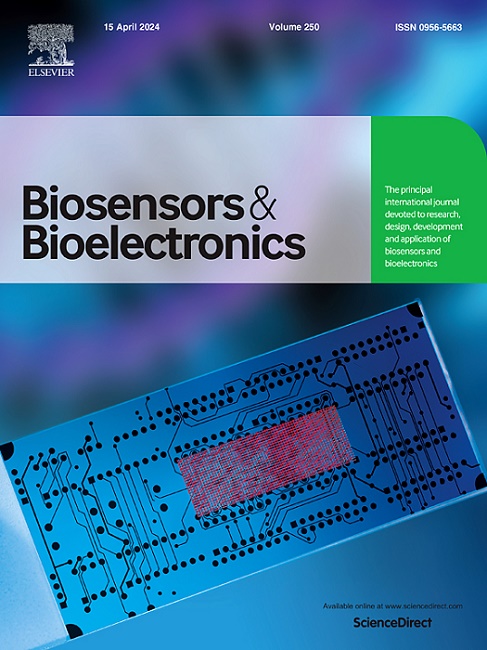基于活性玻璃碳电极的绿色经济型伏安测定法,用于测定植物生长调节剂茉莉酸甲酯。
IF 10.7
1区 生物学
Q1 BIOPHYSICS
引用次数: 0
摘要
本文章由计算机程序翻译,如有差异,请以英文原文为准。
Green and cost-effective voltammetric assay based on activated glassy carbon electrode for determination of the plant growth regulator methyl jasmonate
A green, cost-effective, and efficient square-wave voltammetric (SWV) assay based on an electrochemically activated glassy carbon electrode (aGCE) for the determination of the plant growth regulator methyl jasmonate (MeJA) was developed. The activation was performed by anodization in 0.1 mol L−1 NaOH by 5 cyclic voltammetric measurements in the potential range of 0–2 V at a scan rate of 100 mV s−1. Cyclic voltammetry (CV), electrochemical impedance spectroscopy (EIS) and X-ray photoelectron spectroscopy (XPS) were applied to analyze the difference between the bare GCE and the aGCE in terms of their electrochemical properties. The functionalization of the GCE surface by oxygen-containing groups not only creates new active sites but also improves electron transfer dynamics and electrocatalytic activity. The SWV procedure displays a wide linear response from 0.1 to 50.0 μmol L−1, a low LOD = 0.027 μmol L−1, and LOQ = 0.097 μmol L−1. The aGCE was successfully applied to MeJA analysis in Phaseolus coccineus leaf extracts.
求助全文
通过发布文献求助,成功后即可免费获取论文全文。
去求助
来源期刊

Biosensors and Bioelectronics
工程技术-电化学
CiteScore
20.80
自引率
7.10%
发文量
1006
审稿时长
29 days
期刊介绍:
Biosensors & Bioelectronics, along with its open access companion journal Biosensors & Bioelectronics: X, is the leading international publication in the field of biosensors and bioelectronics. It covers research, design, development, and application of biosensors, which are analytical devices incorporating biological materials with physicochemical transducers. These devices, including sensors, DNA chips, electronic noses, and lab-on-a-chip, produce digital signals proportional to specific analytes. Examples include immunosensors and enzyme-based biosensors, applied in various fields such as medicine, environmental monitoring, and food industry. The journal also focuses on molecular and supramolecular structures for enhancing device performance.
 求助内容:
求助内容: 应助结果提醒方式:
应助结果提醒方式:


